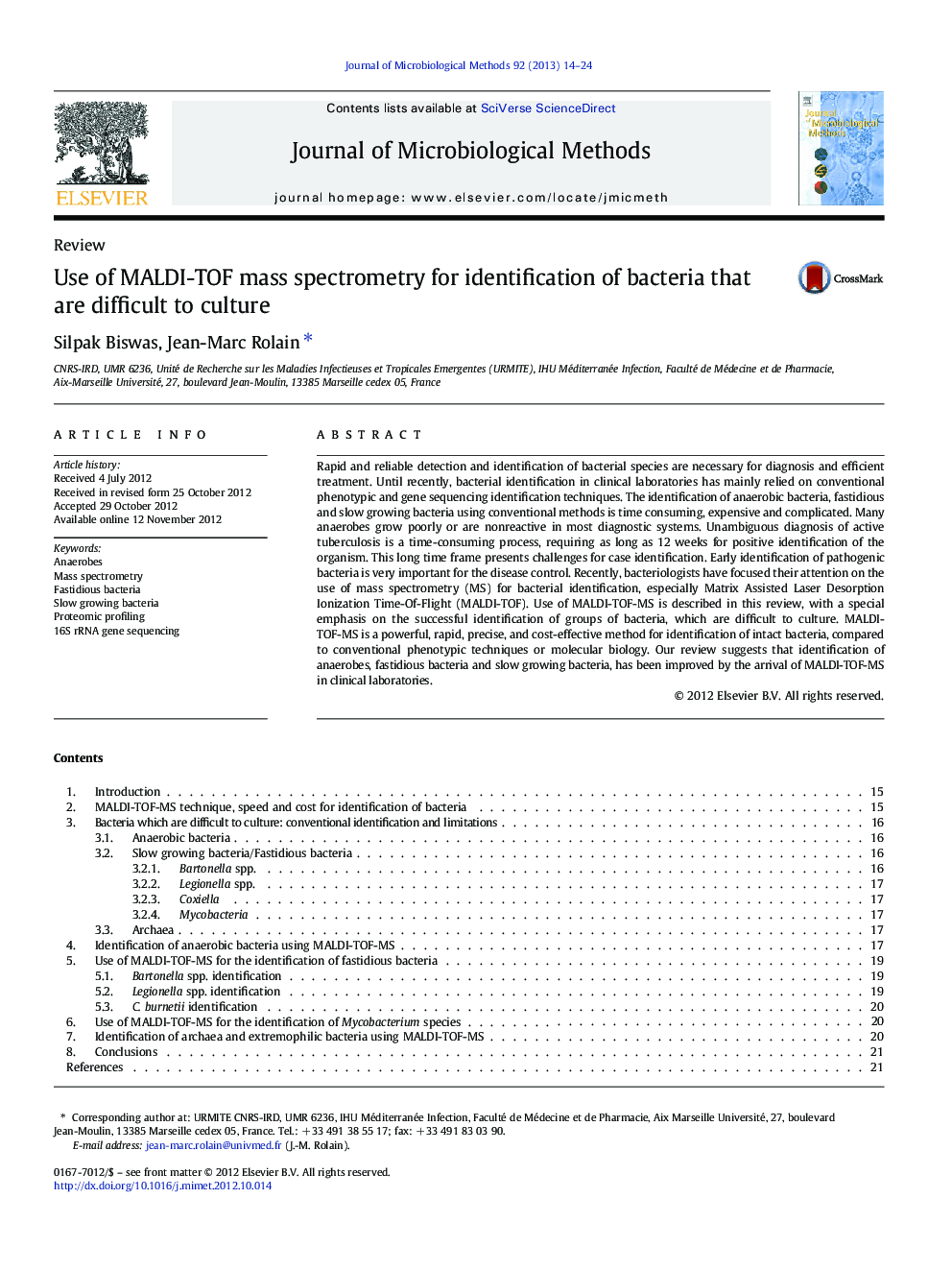| Article ID | Journal | Published Year | Pages | File Type |
|---|---|---|---|---|
| 2090130 | Journal of Microbiological Methods | 2013 | 11 Pages |
Rapid and reliable detection and identification of bacterial species are necessary for diagnosis and efficient treatment. Until recently, bacterial identification in clinical laboratories has mainly relied on conventional phenotypic and gene sequencing identification techniques. The identification of anaerobic bacteria, fastidious and slow growing bacteria using conventional methods is time consuming, expensive and complicated. Many anaerobes grow poorly or are nonreactive in most diagnostic systems. Unambiguous diagnosis of active tuberculosis is a time-consuming process, requiring as long as 12 weeks for positive identification of the organism. This long time frame presents challenges for case identification. Early identification of pathogenic bacteria is very important for the disease control. Recently, bacteriologists have focused their attention on the use of mass spectrometry (MS) for bacterial identification, especially Matrix Assisted Laser Desorption Ionization Time-Of-Flight (MALDI-TOF). Use of MALDI-TOF-MS is described in this review, with a special emphasis on the successful identification of groups of bacteria, which are difficult to culture. MALDI-TOF-MS is a powerful, rapid, precise, and cost-effective method for identification of intact bacteria, compared to conventional phenotypic techniques or molecular biology. Our review suggests that identification of anaerobes, fastidious bacteria and slow growing bacteria, has been improved by the arrival of MALDI-TOF-MS in clinical laboratories.
